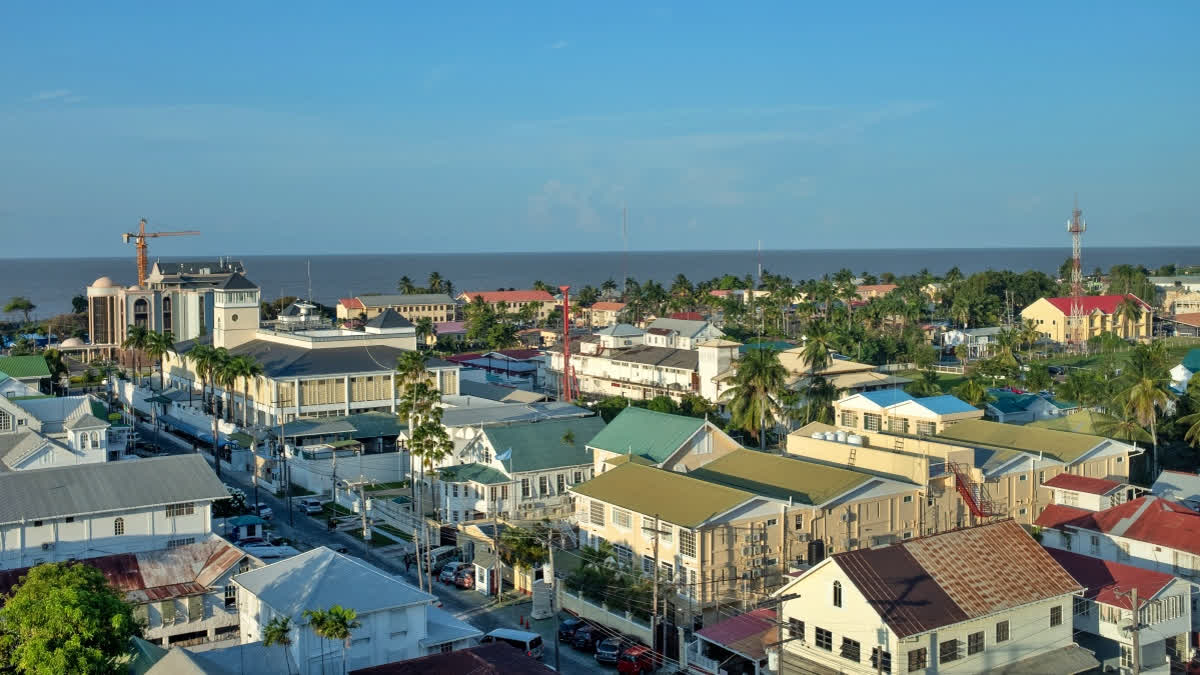When Prime Minister Narendra Modi stepped onto Guyanese soil on Wednesday (the first Indian PM to do so in 56 years), he was not only making history, he was casting a spotlight on an overlooked holiday destination.
Nestled in the heart of South America, Guyana is the ultimate offbeat escape for Indian travellers looking to break free from the usual tourist traps.
Here’s why Guyana should be your next stamp on the passport.
Imagine a place where the forests are as vast as our Western Ghats, the waterfalls could rival Cherrapunji’s rains, and the warmth of the people echoes the hospitality of Rajasthan. That’s Guyana for you, a country where every corner is untamed and alive. Thanks to its shared colonial history and a sizeable Indo-Guyanese population (43% of its citizens are of Indian descent), there’s an undeniable cultural connection that feels like a homecoming.
Let’s not kid ourselves, though. This isn’t your average trip to the Maldives. Guyana is raw, wild and a playground for adventurers who aren’t afraid to swap a 5-star suite for a hammock in the jungle.
The Call of the Jungle
Kaieteur Falls is one of the highest single-drop waterfalls in the world. Standing here, you feel like a tiny speck in nature’s grand design. The falls are five times the height of Niagara but without the crowds or tourist kitsch. Trekking through the rainforest to reach it is part of the magic, with sightings of golden frogs, squirrel monkeys, scarlet macaws, and the elusive jaguar.
A Cultural Bridge Between India and South America
Guyana’s capital, Georgetown, offers a blend of Caribbean vibes and colonial charm. Start your day at St. George’s Cathedral, one of the world’s tallest wooden structures here. Then, dive into the Stabroek Market, a bustling hub that’s as chaotic and colourful as Chandni Chowk. You’ll find vendors hawking everything from fresh cassava to vibrant crafts. And yes, there’s curry, roti, and dhal puri, familiar flavours served with a Guyanese twist.
A Feast of Flavours
Guyanese cuisine is a melting pot of flavours that tells the story of its varied cultural roots. With influences from Indian, African, Chinese and British culinary traditions, the food here is as vibrant as its landscapes. Picture rich curries reminiscent of home, like chicken curry or masala aloo, served with soft dhal puris or flaky rotis. Add to that Afro-Caribbean staples like pepperpot, a slow-cooked meat stew spiced with cassareep (a cassava-based sauce) and a tangy hint of lime.
For seafood lovers, Guyana’s rivers and coastline bring fresh crab curries and fried fish to the table. And no meal is complete without a slice of cassava pone or a handful of Guyanese sweets like gulab jamun, adapted from India.
Rivers And Beaches
If you’re craving some water therapy, Guyana delivers. Take a boat ride along the Essequibo River, where the jungle meets the water in a spectacle of green and gold. Or, head to Shell Beach (a stretch of coastline known for its sea turtle nesting sites). It's not your typical white sand paradise, but it’s a sanctuary for wildlife and solitude.
Adventure Meets Soul
Think of the Rupununi Savannah as Guyana’s answer to Africa’s Serengeti. This vast, open landscape is dotted with cattle ranches and indigenous villages. You can saddle up for horseback riding, explore remote mountains, or simply sit by a campfire under a sky cluttered with stars. It’s a place that forces you to disconnect and live in the moment.
Practical Tips
Best Time To Visit: The dry season from September to November or February to April is ideal for outdoor adventures.
Currency: The Guyanese dollar is the local currency, but US dollars are widely accepted. Pro tip: Always carry small denominations for markets and local vendors.
Food: If you’re vegetarian or vegan, don’t worry. Guyana’s Indian-inspired cuisine means there’s always a veggie option on the menu.
Safety: While Guyana is generally safe, stick to well-known areas and travel with a guide when exploring remote regions.
For Indian travelers looking to escape the predictable, Guyana offers the kind of adventure that sticks with you long after your passport’s been stamped.



